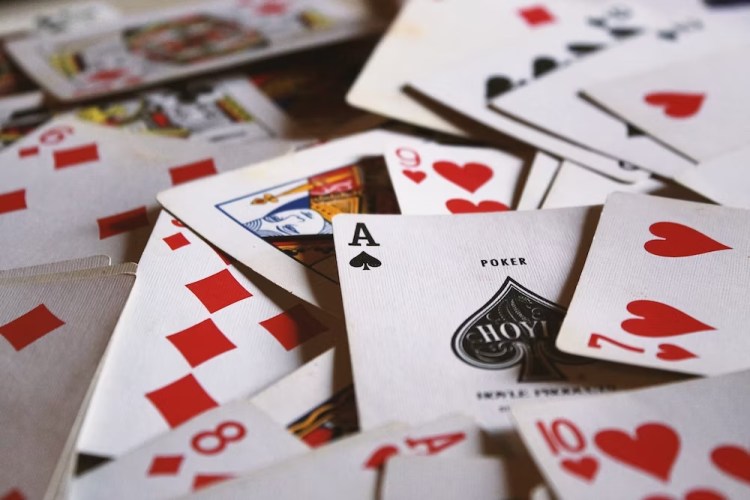Progress has been made with robots and AI when it comes to bridge –
Artificial intelligence can play bridge

Artificial intelligence can play bridge
One of the goals of technology is to help humans do things better. In many areas, that goal has been achieved and often surpassed. But one area that has been a struggle is to develop an artificial intelligent tool that can play bridge like or better than humans. Finally, recent developments in technology seem to have gotten artificial intelligence (AI) to at least come close to playing like humans do.
In this article, we talk about this matter, touching on how artificial intelligence was able to learn how to play bridge.
Artificial Intelligence and Games
Do you remember when Garry Kasparov, the chess player, was defeated by Deep Blue in 1997? That was a fundamental moment in history, as it marked the historical occurrence where computers beat humans in the game of chess. From that moment onwards, computers have become better and better at games and have not only surpassed humans in their knowledge of chess, but they have also made their own contributions to the game – remember AI mastering the game of Go?
Artificial intelligence is very good at games because it can learn strategy, logic, and tricks. This, paired with the fact that it operates at a very high speed, makes artificial intelligence simply great at mastering games. Not only that, but this new technology is also remarkably great at betting due to its skill in collecting and analyzing data and its ability to recognize patterns.
But there’s a difference between chess, go, and bridge, as bridge is a game of imperfect information, and artificial intelligence doesn’t necessarily thrive in this kind of game setting. So, let’s see how AI manages to master the game of bridge and why this happened in the first place.
Robot bridge has been around for a few years, and refers to computer software that can sit down and play the game with you. These robots know how to bid, defend and play the hands, but it is generally understood that there are many limitations. People play robot bridge for practice, and there are even national and world championship events that involve playing against robots only. But the nuances of human interaction, bluff, illogic and error still, at this time, confound a Bot. BTW it’s very easy to play against a robot these days – visit Great Bridge Links Play Against Robots to find apps and clubs that offer these games.
Artificial Intelligence and the Game of Bridge
Bridge is played by four players who compete in two partnerships. As the card deck is split equally, players bid for winning contracts and then play their entire hand turn after turn. The interesting element of bridge is that it does not have a major luck component. Artificial intelligence struggles with the matter of “not knowing,” and in bridge, you don’t quite know what cards your opponents have.
A company called NukkAI has been trying to crack the game of bridge for some time, and they even tried to do so by asking human champions to play 800 deals divided into 80 sets of 10. For this competition, players did not use the bidding part, and all players, AI included, started from a predetermined contract and played out the hands. During this experiment, AI won 67 out of 80 sets. So, in a sense, artificial intelligence did master the game of bridge – at least the play of the cards part of the game.
Problems with this Experiment
The thing that should be taken into account is that this experiment only focused on a part of the game of bridge and not on the whole game as is normally played between humans. The way the experiment was conducted eliminated a certain degree of “unknown” for the machine and, therefore, made it easier for it to master the game. It is safe to say, though, that artificial intelligence would have had a much tougher job winning the game if the game had been played as normal.
It is also worth remembering that the artificial intelligence that famously mastered Go and chess were simple black box algorithms and are therefore unable to explain to humans their thought processes and the reason behind their decisions. In chess for example, it became a normal practice for players to simply play against AI players. The thing is that even though machines suggest the “best” moves, they still can’t explain why those moves would be the best ones.
With a game of bridge, this simply wouldn’t work. Communication is one of the most important pillars of the game, and therefore, Nook, the NukkAI artificial intelligence, had to be able to communicate its decisions. Because of this, Nook learned how to play bridge by first learning the rules and then improving, through trial and error. This learning process is rather similar to the human one.
Conclusion
Yes, artificial intelligence has mastered the game of bridge, at least to some extent, but that’s not the most important aspect of this experiment. The most important aspect is that it was able to communicate to the opponent why a certain decision was the best to make. Because of this, the world of artificial intelligence seems to be improving its communication skills and becoming more and more human-like.
For many people, this is a true nightmare, but for others, it is a fascinating technological advancement that may spill over into many areas of life such as the field of traditional games like chess, go, and as we saw above, bridge.








